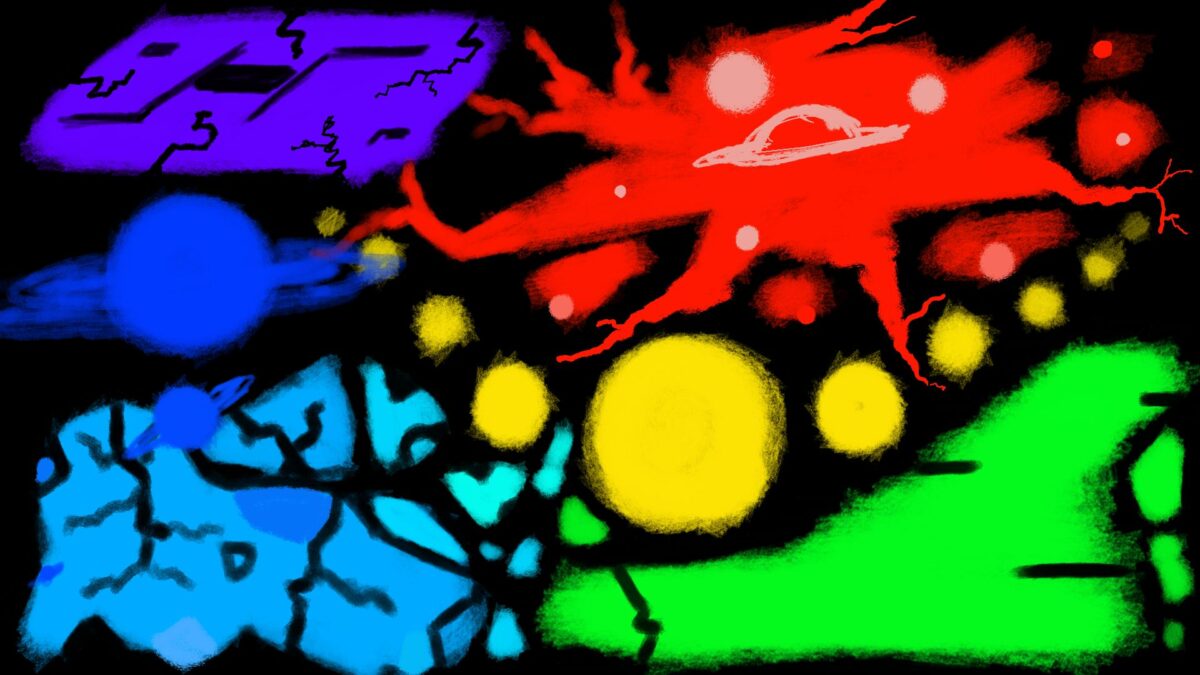- Why draw Maps for your Stories?
- Maps bring visual information.
- They bring Clarity.
- They reveal the Complexity of your World.
- How to Draw them?
- By Balancing Clarity & Complexity.
Summary – 6 steps to a simple Map
- Define the Limits of your Map.
- Place all the Fundamental Locations.
- Link all these Locations, or most of them.
- Place Information on the Characters in these different Locations.
- Place Elements revealing the Origin of each Location.
- Reveal through the Setting how will each Location Evolve.
- Your Maps have 2 Objectives :
- Be Complex enough to be Interesting.
- Be Clear enough to offer Predictability.
Why use a Map?
- Visual Representation
- Maps allow an Economy in descriptions.
- They allow you to Focus description on Fundamental Factors.
- The Imagery of a Map facilitate suggestion.
- The Public may question the existence of position of certain elements.
- Littles elements which may be not clear.
- Elements which are deliberately positioned in a seemingly inappropriate situation.
- Strategy & Planning
- Maps add Predictability.
- They allow the Character to think clearer.
- They allow the Public to think clearer.
- They allow You to think clearer.
- They determine the Proportions & Position of Objects.
- Characters should be able to find Optimal Pathways.
- Whichever they Start from.
- Clarity is Independent of Exit & Starting points.
- Atmospheric
- Maps should always expand.
- They Stimulate Vision.
- They Entice Exploration.
- They Facilitate Suggestion.
- They also allow Kinesthetic sensation.
- Kinesthetic & Visual Memory are Solicited when it comes to maps.
- They create definite atmosphere.
- They expand Imagination.
- They open Possibilities.
If you want to know more about Storytelling through the Setting.
How should you draw your Map?
- Level of Detail
- The Level of Detail is proportional to the Importance of the Location.
- Maps should be Complex Enough to be Interesting :
- They Develop the want to explore.
- They facilitate Discovery.
- They make any Story more Interactive.
- And Clear/Transparent enough to be Predictable :
- They hint onto Future events.
- Potential Issues.
- How will these Issues Resolved.
- And the potential Outcomes.
- Character’s Story
- The Map of a location reveals details on its Inhabitants.
- It may be details on an individual :
- Her Origins,
- Her Goal,
- Her Relationships with other Characters.
- The Characters & the Public draw inspiration from maps.
- Their an occasion to make your Characters more likable, relatable or memorable.
- Environment’s Story
- Stories are dictated by the Environment.
- And Environments are molded by Stories.
- The Elements composing an Environments will reveal you its Origins.
- Why did the Environment came into existence?
- Why is it still here today?
- And its Relationships with other Environments.
- New Stories will spawn out of your Maps.
- Stories will make some Environments more enjoyable.
- Stories make some Environments more memorable.
- Either way Environment should feel immersive.
- This Immersion is created through the Atmosphere :
- Materials of which the Environments are made of.
- It dominant Colors.
- Light’s availability & how it is Used.
If you want to know more about Drawing & Composition.
Essential Locations
- 6 Essential Locations
- If you’re not sure how many Locations you need start with 6.
- It’s a fine number to balance the Stakes in your World, on whichever Scale it may be defined.
- These 6 Locations may be Cities.
- They may be Countries.
- Depending on your Scale, they may be 6 Rooms of a Building.
- They should complement each other.
- The Synergy of your world should be displayed on your map.
- Use Clear, Simple, Contrasting & Complementary Shapes.
- Organizations
- Worlds are administrated by Organizations.
- The Headquarters of each Organization should be easy to find.
- Except if the organization is not legitimate.
- They should be accessible, with the appropriate authorizations.
- The Complexity of your World will be reflected through these Organizations.
- Their Position make your World more Readable.
- Essential Information
- Essential Information has 3 purposes:
- Define the Origins of an Environment or Character.
- Trace or Predict its/her Evolution.
- Relate or Hint on its/her Conclusion.
- Some type of Information may distract the Characters & the Public.
- Allow them to exist : seemingly useless things may be useful later.
- Make use of Colors contrast to reveal Essential Points.
If you want to know more about creating Worlds easily.
Limits of the Map
- Limits of your World
- Your World is defined by a Genre.
- It is defined by a Frame.
- Both combined create a Context.
- They display a Coherence.
- They make your World Consistent.
- What can Happen
- Your Map hints on what can happen in this World.
- Which Creatures can be met.
- Which Buildings serve which Purpose.
- Which Security, Health & Finance system is preferred.
- Which kind of Food is favored by the populations.
- Which Technology is used.
- What cannot Happen
- Your Map hints on what can not happen in this World.
- Certain Threats cannot be Found in this World.
- Neither can be certain types of Resources/Materials.
- How far can Innovation go.
